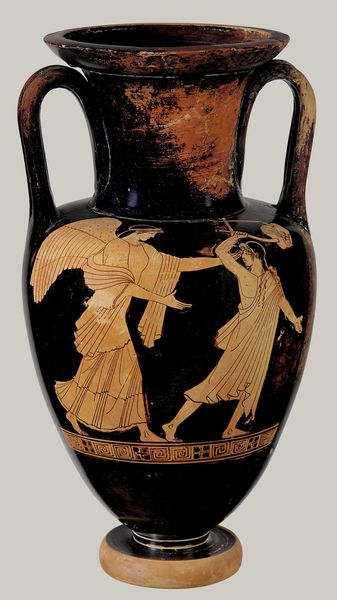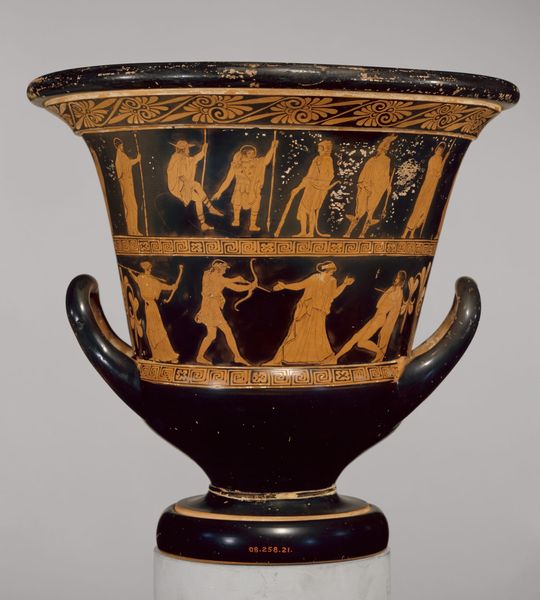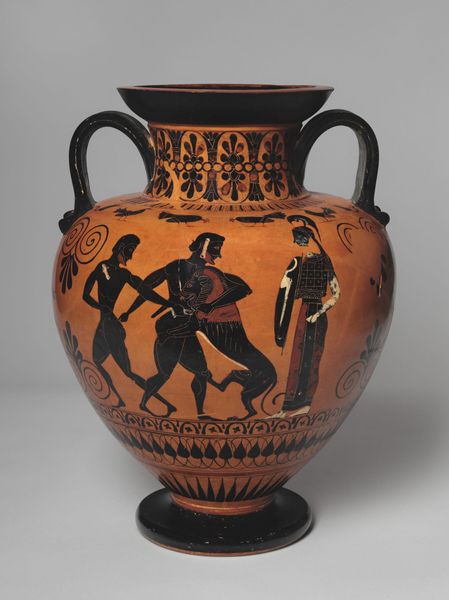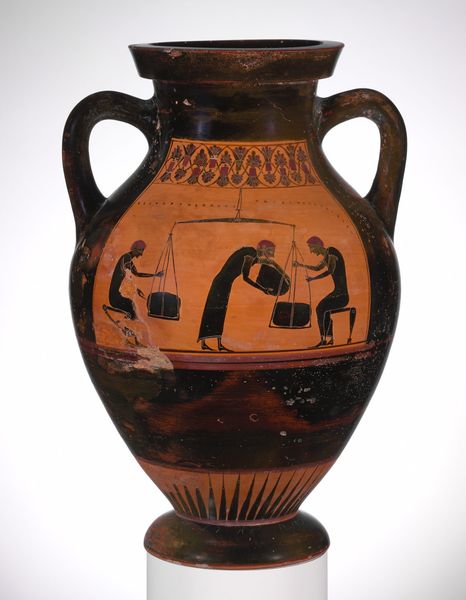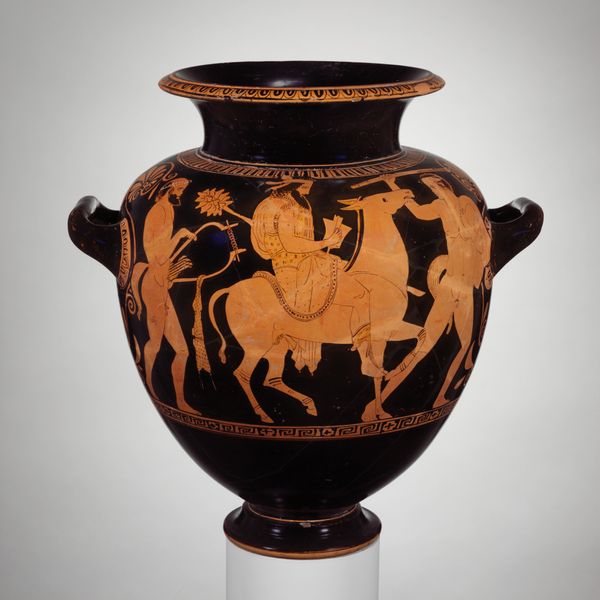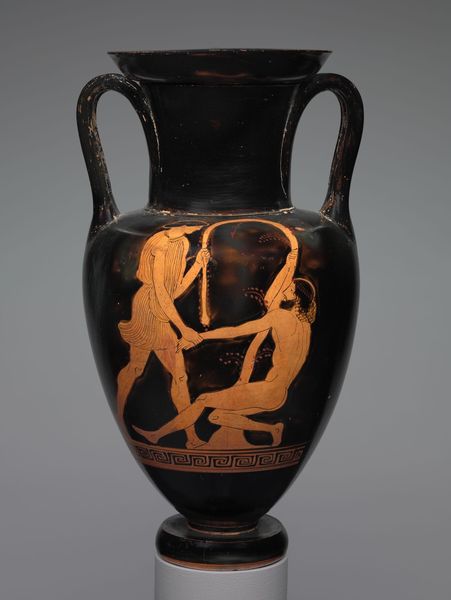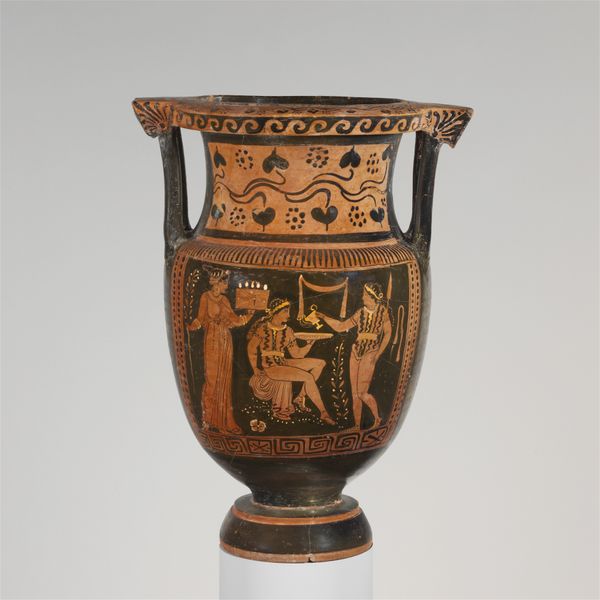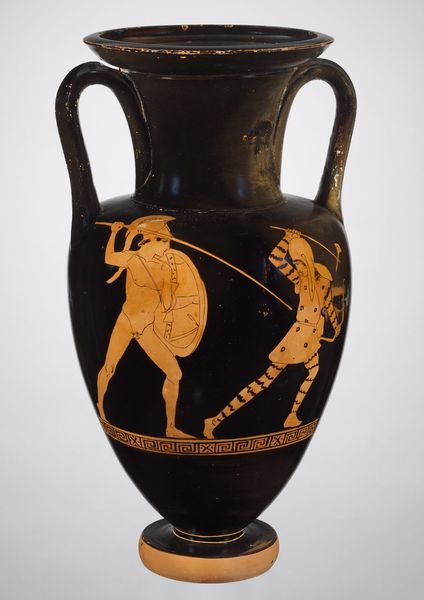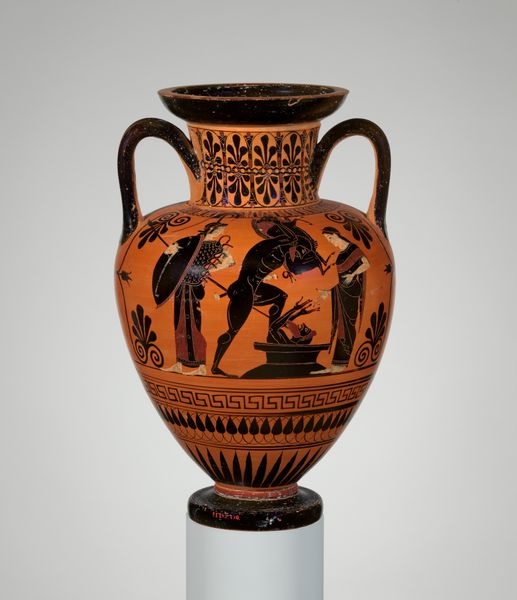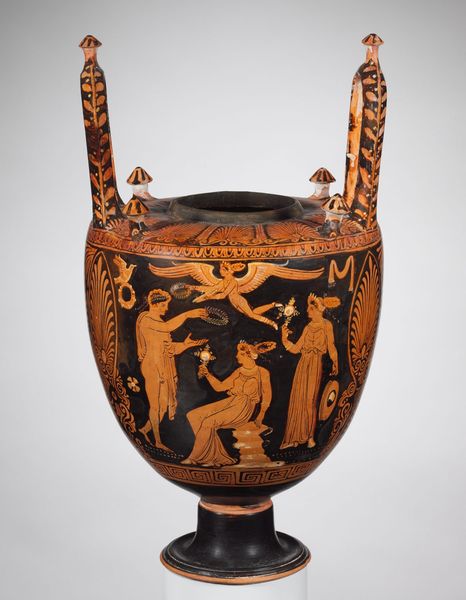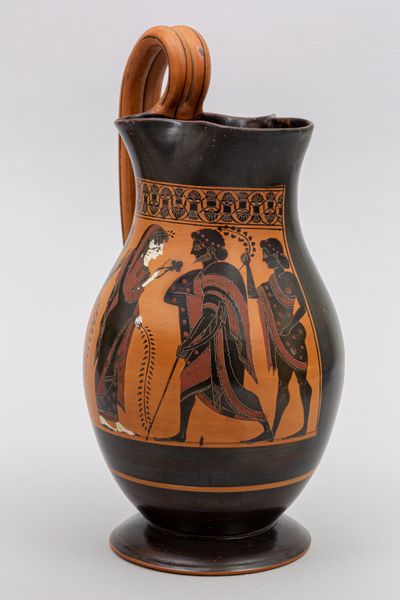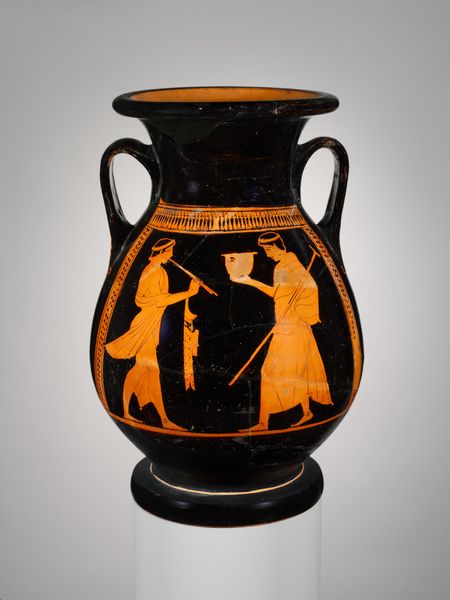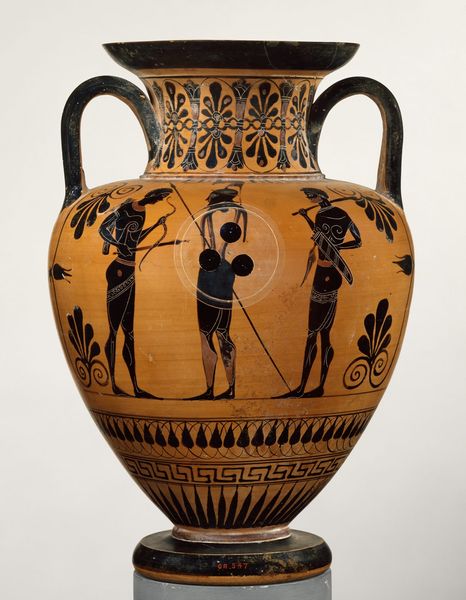
ceramic
#
greek-and-roman-art
#
ceramic
#
vase
#
figuration
#
ancient-mediterranean
#
ceramic
#
genre-painting
#
nude
Dimensions: 2 3/8in. (6cm)
Copyright: Public Domain
Curator: Before us, we have a captivating glimpse into ancient Greece. What we see here are fragments of a Psykter, dating back to around 520 BC. This ceramic piece, currently held at The Metropolitan Museum of Art, is attributed to the artist Oltos. Editor: My initial impression is that it is incredibly dynamic. The black-figure technique against the ceramic red gives such stark contrasts, evoking both a sense of solemnity and energy. Curator: Indeed, the black-figure technique, a hallmark of its era, emphasizes the figures dramatically against the lighter backdrop. What specific details grab your attention in relation to historical narratives? Editor: Well, I am drawn to the depictions of nude male figures, particularly the javelin thrower. His nakedness might signify his participation in athletic games, an arena traditionally reserved for free men, highlighting a society structured on class and citizenship that nonetheless placed incredible value in athletic competition. And consider that genre painting was so commonplace – to immortalize scenes of everyday life elevates it to a heroic, mythic register. Curator: Precisely. And to build upon that, let's not ignore the two draped female figures flanking him. There's an implied audience, witnesses to masculine exertion and physical prowess, indicative of very particular gender dynamics at play in ancient Greek society, and it also underscores a certain aesthetic standard celebrated during this epoch. These scenes function like potent symbols capturing values. Editor: I find myself contemplating who consumed wine from this very vessel, and under what circumstances. We should really be thinking about issues around luxury, access, and the rituals in which they were involved. What do you see as enduring about these vessels? Curator: I keep returning to the vessel itself as an art object, which tells stories about daily life, aesthetics, and symbolic systems across millennia. What was mundane is now monumental, which speaks volumes about cultural memory. It's the intersection of functionality and enduring symbolism. Editor: I agree, its function and artistry coalesce, opening portals into discussions around privilege, representation, and daily ritual from centuries ago. The echoes still reverberate today.
Comments
No comments
Be the first to comment and join the conversation on the ultimate creative platform.
